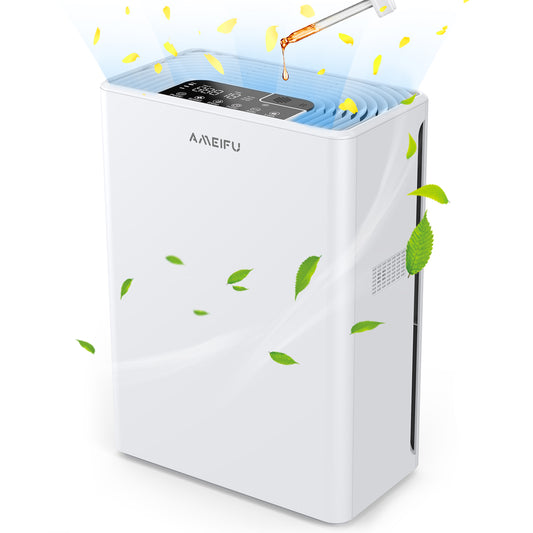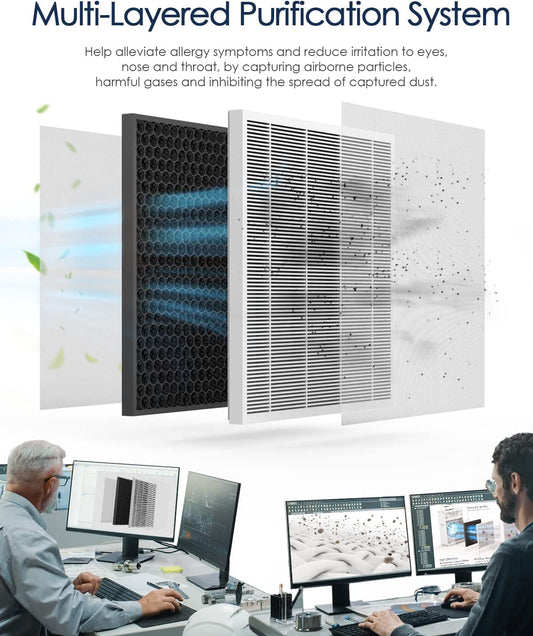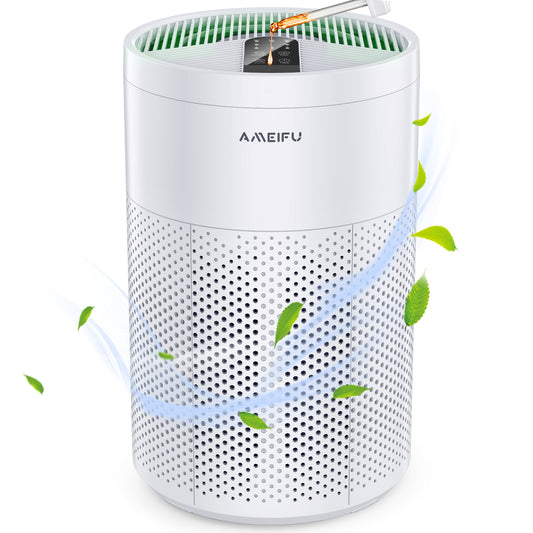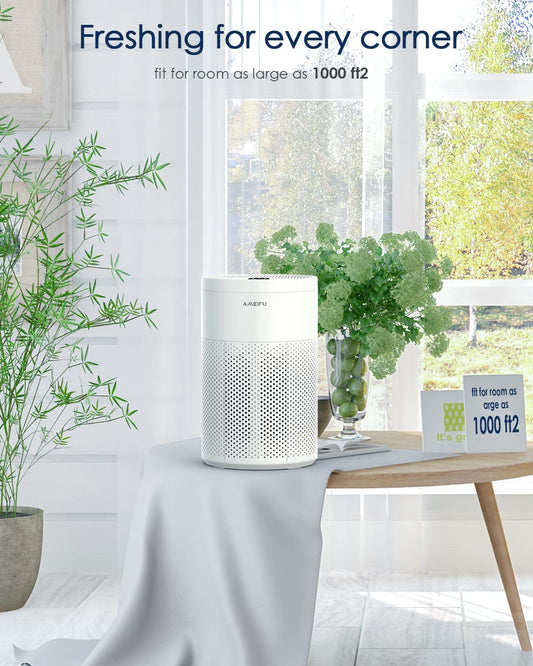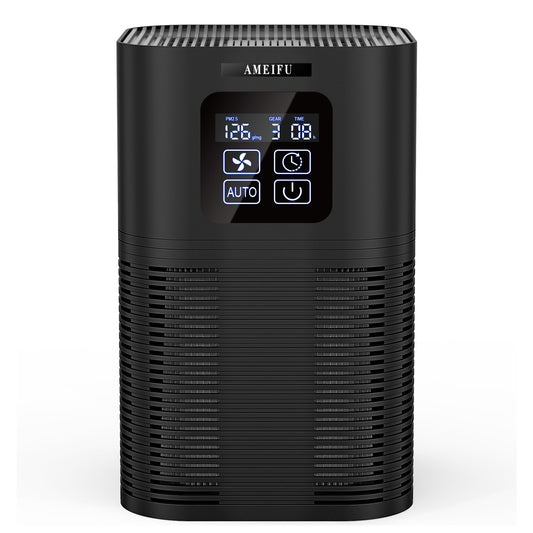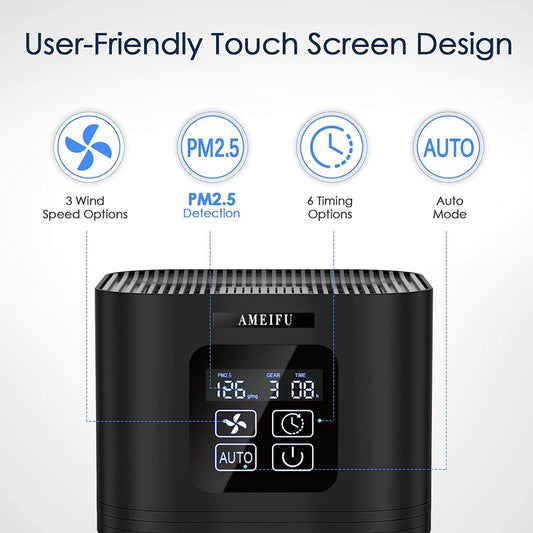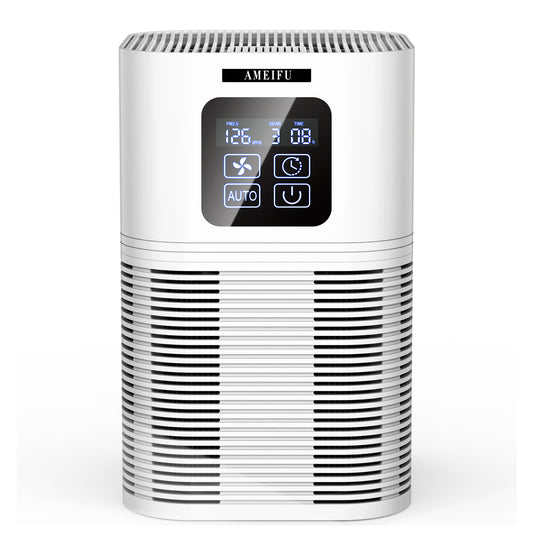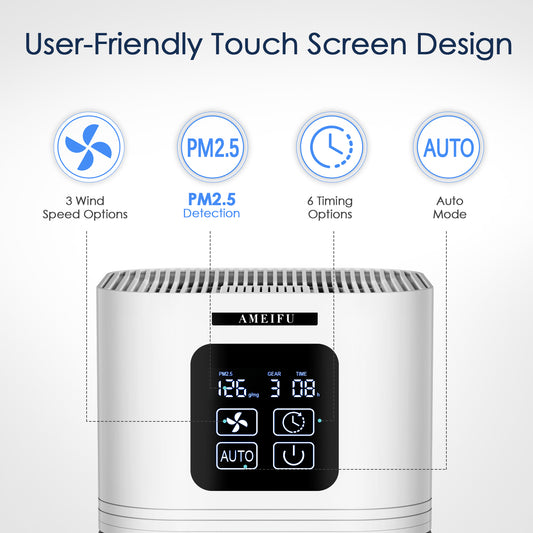Air purifiers are designed to improve indoor air quality by capturing and filtering airborne pollutants. One common question that arises is how long the air remains clean after using an air purifier. In this article, we will explore the factors that determine the duration of air cleanliness after using an air purifier, including room size, air circulation, pollutant levels, and the performance of the air purifier itself. Understanding these factors will help set realistic expectations and optimize the effectiveness of your air purifier for maintaining clean air in your indoor environment.
Factors Affecting the Duration of Clean Air
Several factors contribute to the duration of clean air after using an air purifier. Let's explore these factors in more detail:
Room Size and Air Circulation
The size of the room where the air purifier is used and the effectiveness of air circulation play a significant role in determining how long the air remains clean. Larger rooms or spaces with poor air circulation may require more time for the air purifier to effectively cycle and purify the air.
Pollutant Levels
The initial level of pollutants in the air can affect the duration of air cleanliness. If the room has a high concentration of pollutants, such as allergens, dust, or volatile organic compounds (VOCs), it may take longer for the air purifier to reduce the pollutant levels and achieve clean air.
Performance and Capacity of the Air Purifier
The performance and capacity of the air purifier itself impact how quickly it can remove pollutants and maintain clean air. Higher-quality air purifiers with stronger airflow, multiple filtration stages, and larger coverage areas tend to be more effective in achieving and sustaining clean air.
Sources of Pollution
Identifying and addressing the sources of pollution in your indoor environment can influence how long the air remains clean. If there are ongoing sources of pollutants, such as smoking, cooking, or pet dander, the air purifier may need to work continuously to maintain clean air.
Duration of Air Cleanliness and Air Purifier Usage
The duration of air cleanliness after using an air purifier can vary based on the factors mentioned above. While it is difficult to provide an exact timeframe, here are some general considerations:
Immediate Impact
Air purifiers can have an immediate impact on air quality by capturing and reducing airborne pollutants. As the air circulates through the purifier and the filtration system removes contaminants, you may notice improved air quality within a short period.
Continuous Operation
To maintain clean air, it's essential to run the air purifier continuously, especially in environments with ongoing pollution sources. By continuously cycling and filtering the air, the purifier can effectively remove new pollutants and maintain a cleaner environment.
Room Size and Coverage Area
The size of the room and the coverage area of the air purifier influence how long it takes for the purifier to clean the air. Larger rooms may require more time for the purifier to filter the air effectively, while smaller rooms can experience quicker results.
Pollutant Levels and Air Quality Goals
The initial pollutant levels and your desired air quality goals will also impact the duration of air cleanliness. If the room has high pollutant levels, it may take longer for the air purifier to achieve and maintain clean air. Additionally, the air quality goals may vary depending on individual preferences and specific needs.
Maintaining Clean Air in the Long Term
To maintain clean air in the long term, consider the following tips:
Regular Maintenance
Follow the manufacturer's guidelines for regular maintenance of your air purifier. This includes cleaning or replacing filters as recommended to ensure the unit continues to operate efficiently.
Minimize Pollution Sources
Identify and minimize sources of pollution in your indoor environment. Take steps to reduce indoor smoking, control pet dander, and implement proper ventilation during activities that generate pollutants, such as cooking or painting.
Proper Ventilation
Ensure adequate ventilation in your home by opening windows and using exhaust fans in areas prone to pollutants. This allows fresh outdoor air to circulate and dilute any remaining pollutants, supporting the air purifier's efforts to maintain clean air.
Regular Cleaning
Maintain cleanliness in your home by regularly vacuuming, dusting, and mopping. This helps reduce the accumulation of dust and other particles in the air, allowing the air purifier to work more effectively.
Monitor Air Quality
Consider using air quality monitoring devices to track the air quality in your home. This can provide insights into the effectiveness of your air purifier and help you determine when additional steps may be needed to maintain clean air.
Consider Multiple Units
For larger spaces or multiple rooms, you may need to use multiple air purifiers strategically placed throughout your home. This ensures comprehensive coverage and helps maintain clean air in different areas.
Conclusion
The duration of clean air after using an air purifier depends on various factors, including room size, air circulation, pollutant levels, and the performance of the air purifier itself. While it is challenging to provide an exact timeframe, the immediate impact of an air purifier is noticeable, and continuous operation is essential for maintaining clean air. By considering the factors mentioned and following best practices such as regular maintenance, minimizing pollution sources, proper ventilation, and regular cleaning, you can optimize the effectiveness of your air purifier and enjoy cleaner, healthier indoor air for the long term.


